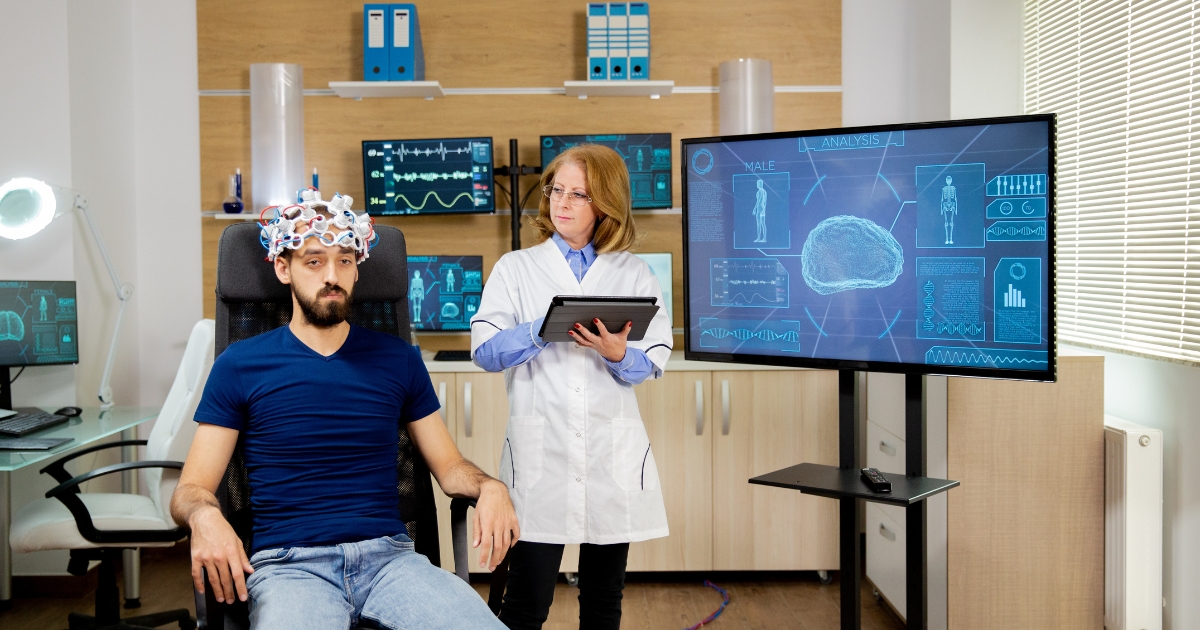Breaking Barriers: Role Of Mert In Supporting Autism Spectrum Disorder Treatment

Autism Spectrum Disorder (ASD) affects millions of individuals worldwide, with symptoms ranging from social and communication challenges to repetitive behaviors. While there is no one-size-fits-all solution, new therapies continue to emerge, offering hope for improved quality of life.
One such promising treatment is Magnetic e-resonance Therapy (MeRT), a non-invasive procedure that aims to enhance brain function. In this blog, we will explore how MeRT is breaking barriers in the treatment of ASD, providing new avenues for support and progress.
What is MeRT?
Magnetic e-resonance Therapy (MeRT) is an advanced neurostimulation technique that uses magnetic pulses to promote brain activity and improve cognitive function. MeRT targets specific areas of the brain that may not be functioning optimally, helping to reset brainwaves and improve overall mental clarity, mood, and behavior.
MeRT differs from other brain therapies by using individualized, personalized approaches based on a patient’s unique brainwave patterns.
This customized Autism treatment with MeRT therapy makes it particularly useful for individuals with ASD, where brain activity is often misaligned or underactive in certain areas.
The Link Between MeRT & Autism Spectrum Disorder
The relationship between MeRT and Autism Spectrum Disorder lies in how the therapy influences brain function. In individuals with autism, certain areas of the brain may show irregularities in electrical activity, which can contribute to the challenges associated with the condition, such as sensory processing issues, difficulty with communication, and emotional regulation.
MeRT aims to address these irregularities by stimulating the brain with magnetic pulses. The therapy encourages the brain to synchronize its electrical activity, which can lead to better connectivity between different regions of the brain.
As a result, this may improve functioning in areas like social interaction, communication, and behavior, offering individuals with ASD greater opportunities to engage with their environment.
How Does MeRT Help in Treating ASD?
Here are several key ways in which MeRT may support individuals with Autism Spectrum Disorder:
1. Improved Brain Connectivity
MeRT helps stimulate the brain to improve connectivity between various regions, particularly areas responsible for sensory processing, emotional regulation, and social communication.
This improved connectivity can help individuals with autism respond better to sensory input and communicate more effectively.
- How it works: MeRT uses brain mapping to identify areas with low or erratic electrical activity. Then, targeted magnetic pulses are delivered to these areas to promote synchronization in brainwaves, potentially improving overall brain function.
2. Reduction in Anxiety and Behavioral Issues
Anxiety and behavioral issues are common among individuals with autism. MeRT’s ability to balance brainwave patterns can have a calming effect, helping to reduce anxiety and improve mood. This can lead to fewer meltdowns, less frustration, and improved emotional regulation.
- How it works: By stimulating the brain to synchronize its electrical activity, MeRT helps the brain to “reset” in a way that encourages emotional stability and reduces impulsive behaviors.
3. Enhanced Social Skills and Communication
One of the hallmarks of Autism Spectrum Disorder is difficulty with social interaction and communication. By improving brain function in the areas that control social processing and communication, MeRT may enhance an individual’s ability to connect with others.
- How it works: MeRT helps to stimulate the brain regions responsible for language processing, empathy, and social cues, which are often underactive in those with autism.
4. Non-Invasive and Drug-Free Treatment
MeRT provides a non-invasive, drug-free alternative to traditional therapies. While medications can have side effects, MeRT focuses on promoting natural brain activity through magnetic stimulation, making it a preferable option for many individuals seeking a holistic approach to treating ASD.
- How it works: The procedure is completely non-invasive, with no need for surgery or drugs. MeRT uses magnetic pulses to stimulate the brain and promote healing, reducing the reliance on medications.
5. Customized Treatment for Each Individual
Each person with Autism Spectrum Disorder has a unique neurological makeup. MeRT recognizes this individuality and tailors treatment based on a person’s specific brainwave patterns. This personalized approach ensures the therapy is as effective as possible for each individual.
- How it works: Brain mapping is used to assess the patient’s brainwave patterns, allowing practitioners to adjust the treatment to target the most relevant areas. This custom approach helps improve outcomes and provides better support for each person.
Benefits of MeRT for Autism Spectrum Disorder
The benefits of MeRT extend beyond just the treatment of ASD symptoms. This therapy offers a range of advantages that can improve the overall quality of life for individuals living with autism.
- Better Cognitive Function: MeRT has been shown to improve cognitive abilities, which can support better learning and problem-solving.
- Increased Independence: By improving communication and behavior, individuals with autism may become more independent and able to participate in daily activities more easily.
- Improved Family Relationships: With better social skills and emotional regulation, individuals with ASD may experience more positive interactions with family members, enhancing overall family dynamics.
- Enhanced Quality of Life: With a reduction in anxiety and behavioral challenges, individuals with autism can experience greater overall well-being.
How MeRT Treatment Works: A Step-by-Step Overview
Initial Consultation and Brain Mapping
The first step in MeRT treatment is to conduct a thorough assessment, including brain mapping. This helps determine which areas of the brain need attention.
Customizing the Treatment
Based on the brain map, MeRT will deliver targeted magnetic pulses to specific regions of the brain.
Follow-up Sessions
Multiple sessions are typically required to achieve optimal results. Each session builds on the previous one to enhance brain function gradually.
Monitoring and Adjustments
The treatment is continually monitored, and adjustments are made as needed based on the patient’s progress.
Ultimately, MeRT is an exciting and innovative treatment that offers hope for individuals with Autism Spectrum Disorder. Enhancing brain connectivity and function can improve autism-related challenges like communication, social interactions, and behavioral difficulties.
As MeRT research grows, this non-invasive, drug-free therapy shows promise as a vital tool for managing and supporting ASD individuals. For families seeking an alternative to traditional treatments or complementary therapy to support other interventions, MeRT represents a promising breakthrough.
If you’re interested in exploring this therapy for your loved one with autism, it’s essential to consult with our qualified doctor to discuss the potential benefits and options available. MeRT could be the next step in breaking the barriers to a better, more fulfilling life for those living with Autism Spectrum Disorder.


